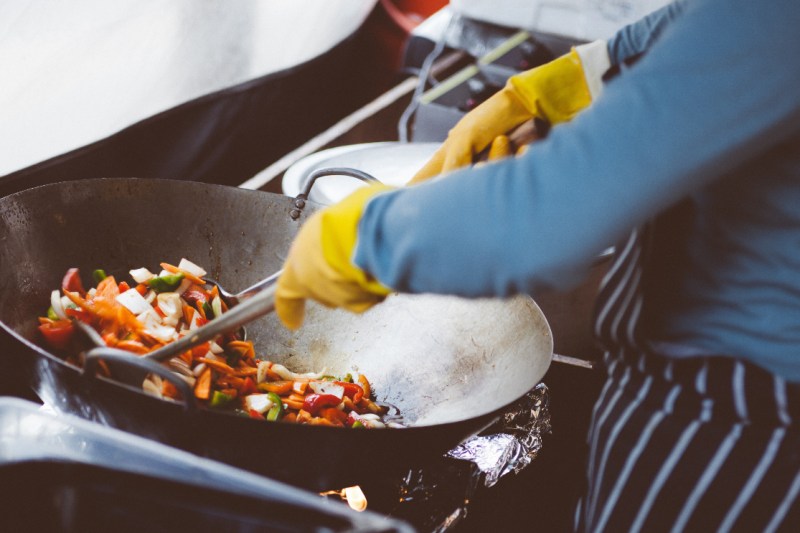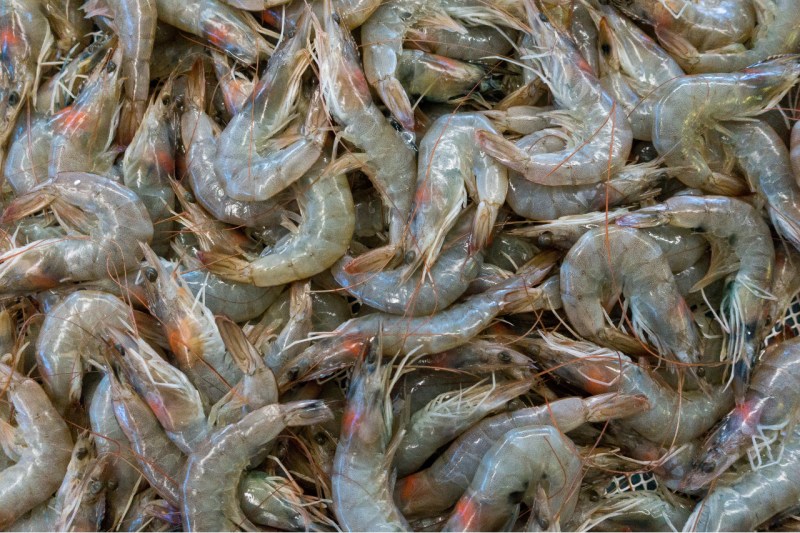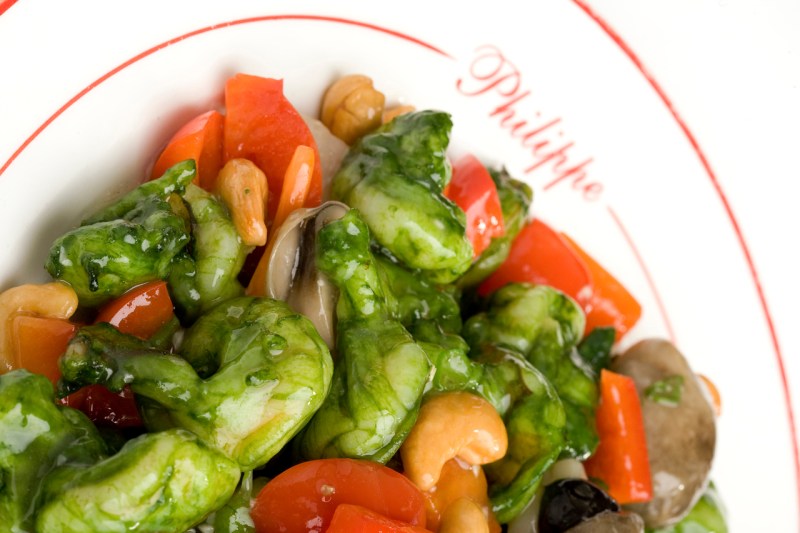While shrimp is delicious deep-fried or grilled, for many Chinese chefs, stir-frying is the preferred method. As a small crustacean, shrimp cook fast, quickly becoming a rubbery and unpleasant mess if overdone. At its best, stir-frying is a marriage of high heat and speed, making it the perfect cooking style for a fast-cooking ingredient like shrimp.

At Philippe Chow restaurant in New York City, famed Hong Kong chef Philippe Chow has mastered the techniques of stir-fried shrimp. Chow’s food is a blend of his classic Chinese culinary training and a unique, theatrical style. Because of this modern combination, Philippe Chow has grown into a celebrity hotspot over the years with guests like Penelope Cruz, Nick Cannon, Ciara, and Russell Wilson. Seafood is a highlight at Philippe Chow with excellent renditions of Chinese stir-fried shellfish with flavors ranging from peppery to spicy and sweet. However, one unique shrimp dish stands out at Philippe Chow — the Green Prawns. This intensely colorful dish of bright green shrimp is a blend of both classic stir-frying techniques and distinctive Philippe Chow flair.
Related Guides
- The Guide To Chinese Cuisine, One of the World’s Most Influential Food Cultures
- The 7 Best Woks for Your Kitchen in 2021
- How To Grill Shrimp, According To the Wild American Shrimp Chef of the Year
Philippe Chow’s Wok Cooking Tips

For Philippe Chow, stir-frying shrimp is the best way to achieve that ideal balance of textures. “It must be done with very, very hot oil in a very hot wok,” said Philippe Chow. “The reason for this high heat is so the prawns stay in the wok for the least amount of time when cooking.”
There are a few important steps to take before breaking out the wok. One of the first things to do is to make sure your wok is seasoned. This crucial step will build a smooth, nonstick surface on your wok. While a nonstick wok made from carbon steel won’t need this extra step, a traditional wok will. To season, add a little oil (sesame oil is good because it burns quickly) to the wok. Then, using a kitchen towel (hold with a pair of tongs if you wish), rub the oil over the entire wok — this will give it a darkened, blackened effect. Once your wok is seasoned, avoid using any metal scour or iron wool on it as this will take off that hard-earned seasoning.
The key to a successful stir-fry is speed. To accomplish that, prepare all your ingredients beforehand so that the ingredients can be tossed in quickly and effortlessly. It’s also important that all the ingredients (meat and vegetables) are chopped uniformly in size to ensure even cooking. Since stir-frying is all about high heat, be sure to use an oil with a high smoking point like peanut or vegetable oil (avoid sesame or olive oil). Another important factor is to always preheat the wok until the oil is smoking to ensure the ingredients sear rather than poach. The ingredients should also be added in order, starting first with aromatics (garlic, ginger, chilies), then the prawns before tossing in the vegetables. Finally, a splash of water or broth should be added at the end to help steam everything together.
Green Prawns Recipe

The first thing that jumps out about this prawn dish is the color — a vibrant shock of green, almost grassy and vegetative in appearance. This dynamic color is achieved by a spinach puree that’s combined with the shrimp before cooking. At Philippe Chow, they use wild Australian King Prawns (U/15 (Colossal) is the preferred size.) You can substitute farmed shrimp if wild is unavailable. However, wild shrimp will have a more complex flavor that really accentuates the overall dish.
The high heat of stir-frying is designed not only for fast cooking but also flavor. In Cantonese, this is known as wok hei (wok energy or wok breath). This is difficult to achieve in home kitchens because of the relatively weak gas burners. In a Chinese restaurant kitchen, the gas burners for the woks are incredibly loud (like a jet engine). Ingredients cook extremely fast on these burners, imparting a smoky flavor. Even in China, this wok hei flavor is seen as mostly a restaurant flavor element and not something achievable by home cooks. To achieve the best texture and flavor without restaurant powered burners, the best way is to cook each ingredient separately on high heat until its just about done. Then, set each ingredient aside and combine them in the wok at the end with the sauce. This ensures that each ingredients will be seared properly.
Ingredients:
- .5 pound spinach
- 1 pound shrimp (extra-large shrimp) deveined and butterflied
- 3 ounces carrots
- 3 ounces cashews
- 3 ounces water chestnut
- 3 ounces mushroom
- 1/3 red bell pepper
- 6 ounces chicken stock
- 1 tsp tempura power
- 2 tsp salt
- 1/3 cup vegetable oil
- 1 tsp flour
Method:
- Blend fresh spinach in a blender until smooth.
- Combine shrimp, spinach puree, 1 tsp of salt and shrimp tempura powder in a bowl; mix well and let the shrimp soak.
- Mix chicken stock with 1 tsp of flour. Set aside.
- Add 1/3 cup vegetable oil into a wok on medium-high heat.
- When the oil is hot, add shrimp and quickly stir-fry for 1 minute. Set shrimp aside.
- Empty out half the oil from the wok. Then, bring it back up to heat.
- Add peppers, carrots, water chestnuts, and mushrooms. Stir fry quickly to retain that crisp bite.
- Return shrimp to wok then add chicken stock and 1 tsp of salt. Stir-fry for another minute.
- Serve hot with white rice.



